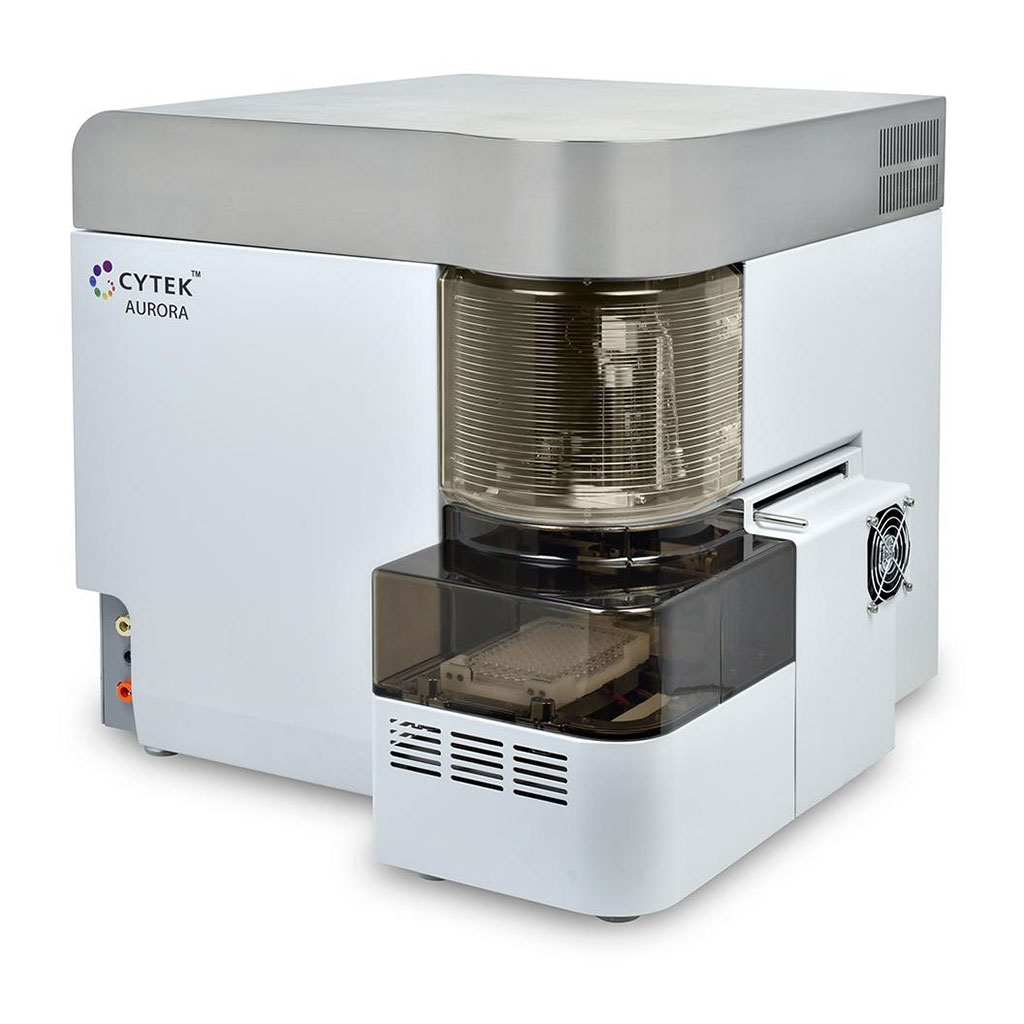Distinct Inflammatory Profiles Distinguish COVID-19 From Influenza
By LabMedica International staff writers
Posted on 30 Nov 2020
Acute respiratory failure occurs in a subset of COVID-19 patients. Understanding the etiology of respiratory failure in COVID-19 patients is critical for determining the best management strategies and pharmacologic targets for treatment.Posted on 30 Nov 2020
Cytokine storm syndrome (CSS) has been proposed as underlying the etiology of respiratory failure in patients with COVID-19. This model suggests that respiratory failure is related to significant pro-inflammatory cytokine expression that leads to inflammatory cell recruitment and tissue damage in the lung.

Image: The Cytek Aurora spectral flow cytometer (Photo courtesy of Cytek Bioscience).
A team of medical scientists led by those at Washington University School of Medicine (Saint Louis, MO, USA) undertook a comparative investigation of inflammatory responses in a cohort of 79 COVID-19 patients, 26 influenza A or B patients and 16 healthy controls. Both the COVID-19 and influenza cohorts included patients with moderate disease, and severe disease, defined by individuals requiring mechanical ventilation for acute respiratory failure or who ultimately died due to their illness.
The team determined absolute counts of CD45+ cells in whole blood at the time of blood collection on fresh samples by flow cytometry with Precision Count Beads (BioLegend, San Diego, CA, USA). Peripheral blood mononuclear cells (PBMCs), prepared using Ficoll separation, were analyzed using a panel of antibodies directed against different antigens. Samples were run on a Cytek Aurora spectral flow cytometer using SpectroFlo software (Cytek Bioscience, Fremont, CA, USA).
Plasma obtained from subjects was frozen at -80 °C and subsequently analyzed using a human magnetic cytokine panel providing parallel measurement of 35 cytokines (Thermo Fisher Scientific, Waltham, MA, USA). The assay was performed with each subject sample performed in duplicate and then analyzed on a Luminex FLEXMAP 3D instrument (Luminex Corporation, Austin, TX, USA). Single-cell gene expression libraries were prepared using 5-prime (V2) kits and sequenced on the NovaSeq 6000 platform (Illumina, San Diego, CA, USA).
The scientists found that COVID-19 patients exhibited lower cytokine levels than influenza patients. Among the statistically significant reduced cytokines exhibited by COVID-19 patients compared to influenza patients were IFN-γ, MIG, IL-1RA, IL-2R, GCSF, IL-17a, IL-9, and MIP-1α. In addition, the team found that COVID-19 and influenza patients exhibited trends of decreased B cells and significant reductions in both T cell subsets, which generally constitute the majority of circulating peripheral blood mononuclear cells (PBMCs) in healthy controls. Circulating activated CD4+ and CD8+ cells were equivalent across all groups. However, when compared with either influenza patients or controls, COVID-19 patients exhibited significantly reduced numbers of circulating monocytes, including all three common classifications of human monocytes (classical, intermediate, and non-classical).
Further, COVID-19 patients were observed to have reduced abundances of HLA-DR on the surface of intermediate monocytes when compared with influenza patients or controls after controlling for covariate effects. Additionally, COVID-19 patients exhibited significantly less surface HLA-DR on CD8+ T cells than influenza patients, and trends toward less HLA-DR on CD4+ T cells in comparison to both influenza patients and healthy controls.
The authors concluded that the signatures of this common COVID-19 phenotype compared to influenza were equivalent levels of IL-6 and IL-8, paired with lower levels of cytokines in many other pathways and essentially the absence of any Type I or Type II IFN response. The study was published on November 13, 2020 in the journal Science Advances.
Related Links:
Washington University School of Medicine
BioLegend
Cytek Bioscience
Thermo Fisher Scientific
Luminex Corporation
Illumina














